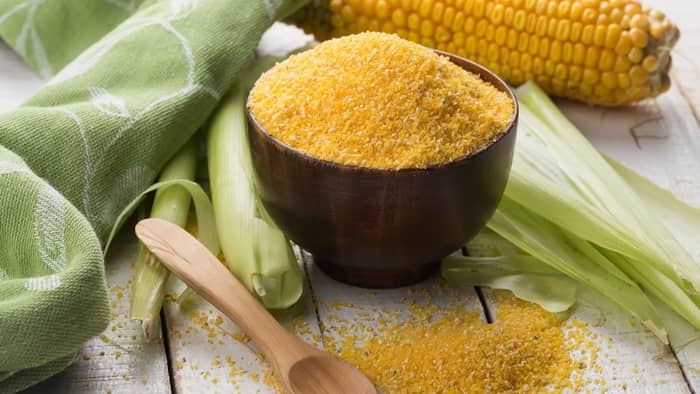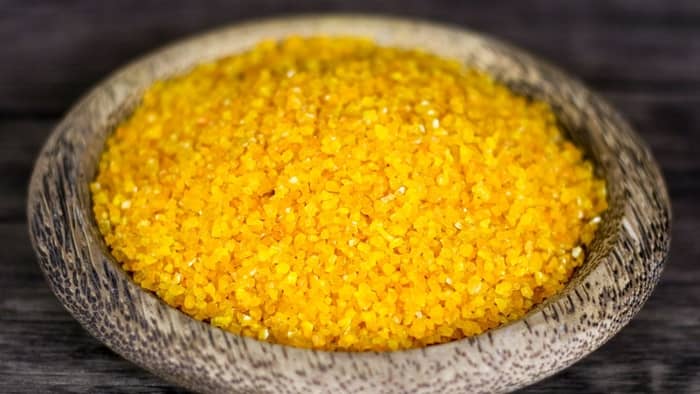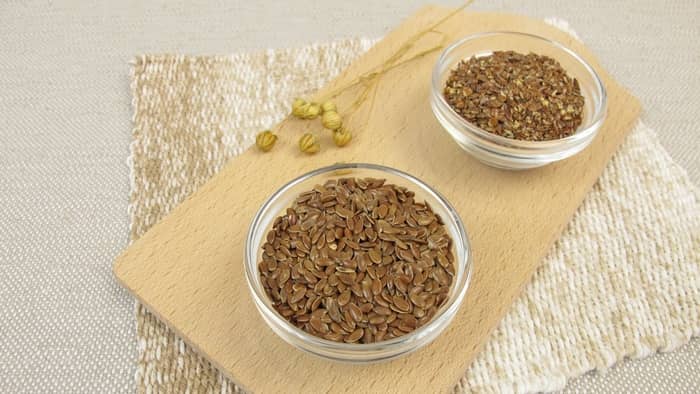Last Updated on January 18, 2022
Today we’re going to be looking at cornmeal substitute for cornbread. Not all substitutes are gluten-free, so let’s look at the top substitutes to use. Making cornbread without cornmeal is actually easier than you might think. Obviously, cornmeal is the best choice to use when making cornbread, but many cornmeal brands aren’t gluten-free. This is usually because of additives or manufacturing methods.
What Is Cornmeal?
Cornmeal is made of yellow corn that has been ground down. It comes in a variety of textures, such as fine, medium, and coarse. You’ll most likely recognize cornmeal as the main ingredient in cornbread – but it is in fact, a staple gluten-free food that is used widely in gluten-free cooking and baking.
It’s very starchy and you can use cornmeal in a range of dishes. If you fry foods with cornmeal, it has a light, crispy texture.

Learn more about: Gluten Free Cornmeal Brands
Is Cornmeal Gluten-Free?
The simple answer to this question is: it depends. In it’s most natural form, cornmeal is 100% gluten-free. However, that is not always the case with the cornmeal products you find in your local grocery stores. Depending on the preparation and manufacturing methods, and even some additives, many cornmeal products are not gluten-free.
Cross contact is a huge risk in many cornmeal products, but any cross-contact should be clearly displayed on the packaging, as a “may contain ___”.
As there are only a few completely gluten-free brands out there for cornmeal, you may want to use a substitute for cornmeal when making cornbread.
Cornmeal Replacement For Cornbread
If you’re looking for a substitute for cornmeal, look no further! Here’s some tips to bear in mind before we look at the replacements you can use:
- Cornmeal has different uses in every recipe, so be sure to know what cornmeal is adding to the recipe you’re making – is it texture? Flavor? Consistency? The answers to these questions will make for different substitutes
- If you are adding cornmeal for flavor – try to use something that has a corny taste
- If you are adding cornmeal for texture – try to find a replacement with a similar consistency
Of course, all the options we will be looking at are suitable to consume when following a gluten-free lifestyle. Just ensure that you’re purchasing gluten-free products by reading the ingredients, and checking that it contains no cereal grains (wheat, rye, barley, etc.) and that there are no “may contain ___” warnings.
Find more information about How To Make Cornbread Without Baking Powder?
Corn Grits
The perfect replacement for cornmeal in cornbread is corn grits. As corn grits are also made from corn, if you’re wanting the strong corny taste in cornbread, this is the option for you.
It’s important to note that corn grits are quite coarse (much coarser than cornmeal), so be wary with how much you add – you’ll likely need less corn grits than you usually use when making cornbread with cornmeal. If the texture is a problem and you have time, you can grind down the grits to make the texture similar to that of cornmeal.
For texture and taste, corn grits are the substitute that suits best!

Polenta
Polenta is another popular choice. In fact, many recipes call for you to use polenta instead of cornmeal if you don’t have it available. It’s important to note that some people call cornmeal, polenta – but they are two entirely different food products!
The ratio of cornmeal: polenta is 1:1, so there’s no confusion with measurements.
Much like cornmeal, polenta comes in a selection of consistencies, such as coarse, medium, and fine. So it’s very easy to replace the cornmeal with a texture that you desire in polenta.
Corn Flour
If cornflour is easier for you to source than cornmeal, it can be a great alternative. However, as flour is so fine, it’s difficult to obtain the same consistency. The taste will be just as corny and flavorful, but the texture will not be the same as when using cornmeal.
While corn flour is slightly different to cornmeal, they are essentially the same thing, so it won’t make your cornbread taste very dissimilar than usual.
Ground Oats
It’s important to note, that you need to buy certified gluten-free oats if you’re using oats as a replacement for cornmeal. Some people love the texture of cornbread, so if you’re looking for the texture of cornbread, without the overwhelming corny taste – gluten free oats are a great way to achieve this. Another bonus of gluten-free oats is that they are less calorific than cornmeal.
Breadcrumbs
The same goes for breadcrumbs in every way. Be sure to be using gluten-free breadcrumbs, or if you’re making your own at home – be sure to use gluten-free bread. The texture is similar to that of cornmeal (and ground oats). Plus, it’s another good substitute if you’re not the biggest lover of the corny taste.
Ground Flaxseed
If you’re looking for a healthier alternative, this should be the option of choice. While it may not taste the nicest, the health benefits make this one of the best choices. Flaxseed is known for keeping you fuller for longer and is low in calories, carbs, and starch than cornmeal. But has the same texture! It’s a win-win.
You may be losing some of the iconic corny taste from cornbread, but it’s perfect if you need to watch your carb and calorie intake.
You can find even more substitutes for cornmeal here. They even go wild with substitutes like tortilla chips!

Conclusion
I hope this article has helped you to become more familiar with the range of options you have available to substitute cornmeal within the much-loved food, cornbread. I’m not the biggest lover of corn, so some of the less corny replacements are perfect for me!
Do you use any of these substitutes? Or could you recommend any others? Please feel free to leave any answers in the comments below. Sharing is caring!
Read more about: Substitutions For Oat Bran

Hi, my name’s Zoë. I’m 28 years old and live in London, UK. I work full time as a freelance writer and critic for West End theatre. Writing has been a passion of mine for as long as I can remember. I spend most of my free time at the theatre, or at conventions. I’m married to the love of my life, and live in a small apartment with my fur baby, Lillie. I run two of my own blogs: No Safer Place and Stage to Page: both of which have won awards. I also have a YouTube channel where I talk about all things stagey.
